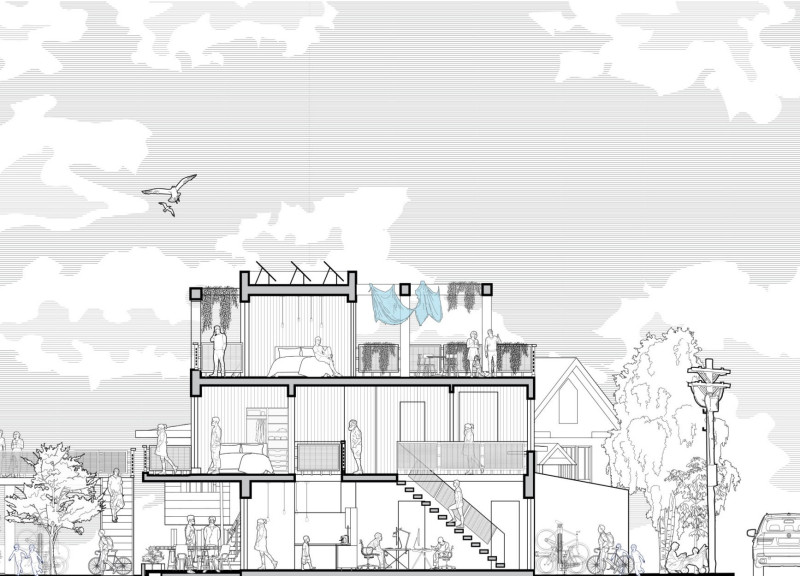5 key facts about this project
The project represents a pragmatic approach to urban living, emphasizing sustainability and efficiency. Each housing module is designed to maximize space while ensuring privacy and comfort. The modular nature allows for flexibility in design, enabling units to be configured in various arrangements to foster community interaction while accommodating individual needs.
Innovative Modular Design
The architectural design features a range of modular units, including the Quarter Court Module, Skinny Court Module, and Half Court Module. These units cater to different living arrangements, from compact spaces for individuals to larger units for families. The adaptive nature of these modules allows for a more responsive approach to housing demands, ultimately contributing to the local community's growth.
The design prioritizes communal spaces that enhance social interaction among residents. These areas include a community lawn for gatherings and a vegetable garden that fosters sustainable living practices. By integrating communal amenities, the project encourages a sense of belonging and shared responsibility within the neighborhood.
Sustainable Material Selection
The architectural design employs sustainable materials such as timber, steel, glass, and reinforced concrete. Timber is favored for its minimal environmental impact and aesthetic appeal, while steel adds structural integrity. Extensive use of glass enhances natural light and ventilation, promoting energy efficiency. Reinforced concrete serves as a reliable foundation element, ensuring long-term durability. Furthermore, the project incorporates local sourcing strategies to reduce carbon footprints and supports local economies.
In summary, "Infill in My Backyard" serves as a model for sustainable urban infill housing. Its flexible modular design and emphasis on community engagement set it apart from conventional housing projects. For more detailed insights into the architectural plans, sections, and designs, readers are encouraged to explore the project presentation. This exploration can provide a deeper understanding of the architectural ideas and design principles that underpin this innovative initiative.























